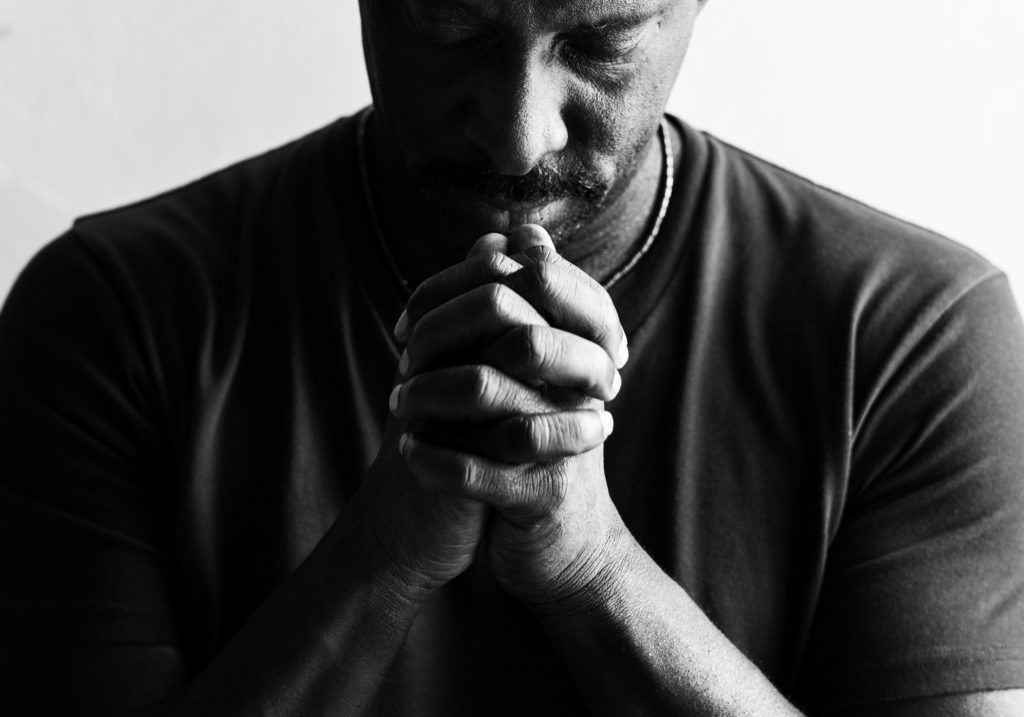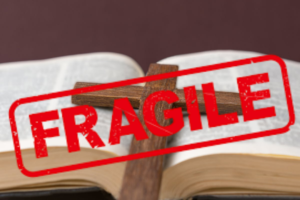Table of Contents
How to Pray with Your Child
Prayer is one of those things that “spiritual people” claim to do all the time. They speak to the higher power with frequency and reverence. Yet, from anecdotal and research-backed evidence, fewer people know how to pray. Even fewer know how to pray with their children. This article is a dive into the mechanics and methods of prayer.
While I have small children, I use many of these techniques personally. So, they should function well with older kids as well, and I will provide some tips from my days as a youth worker for getting teens to come out of their shells even if you have never been spiritual with them. As a final note, before we begin, these techniques can be taken across faith divides. My wife and I use yoga to stretch our bodies and contemplate the Christian God instead of the Hindu Vedas. The prayer practices I will show you transcend one understanding of faith.
Why Pray?
The first question of prayer should be why? In general, prayer does a lot of work in our spiritual walks because it is our personalized connection with the divine. But, after being a medical translator in some Central American countries, prayer provides an even deeper connection when utilized in a communal setting.
Before pulling some teeth in Guatemala, we usually said a prayer. In the United States, that usually means one person prays, and everyone else listens. In Guatemala, everyone prayed simultaneously. Because I was so caught off guard by the cacophony of Spanish, Mayan, and English voices, I listened. What I heard was at first noise, and then it became like a holy symphony with everyone praying together. So the next time we prayed, I was happy to join the noise and then listen to the people pouring their fears and hopes out to God.
As one older member of my church once said, “prayer externalizes our innards.” The reason why “spiritual people” pray is that humans need to “externalize our innards.” “Spiritual people” have just come to realize how much we need to do this. Prayer allows us to move from the past, hope for the future, and land in the present. And presence is what our children crave most from us, just like our technology.
Deepening Faith
Tripp Fuller Ph.D. Theologian and zesty podcaster once noted that he is worried about empowering his children to find their own theological practice. As a Ph.D. theologian, it was his experience that those who were well-grounded in a particular tradition, most likely the custom of their parents, made the best and most charitable theologians. Regardless of which faith, they landed with a healthy religion in the end.
If prayer grounds adults, how much more does prayer ground our children in a religious tradition? This grounding doesn’t brainwash them forever. Instead, it opens the door to more profound appreciation and understanding of spirituality regardless of future choices. That is a door I want open for my children. I want them to be able to choose a spirituality that makes them full humans. Prayer is a foundational principle for moving through that door of belief. Therefore it is a gift worth giving to our children.

Hope for those who are bad at prayer
Most people who are “bad at prayer” often lack the communication skills to engage in it confidently. It is very similar to speaking another language. When we learn new languages we often like to speak to ourselves first (like silent prayer), so we don’t sound silly. Then we progress to speaking out loud. This is how we learned to speak and how our children learn to speak from us.
For those bad at the language of prayer, linguists offer us some excellent hope. Children who hear different languages at home, even if spoken improperly, can pick up foreign languages quicker and better when introduced to them formally. My son, for example, was able to make friends with an immigrant classmate even though that classmate spoke faulty English. His success came from two places was for two reasons, my son has incredible linguistic talents, and we speak Spanish at home all the time. Our fluid linguistics at home allows him to communicate (and be communicated to) when words fail. My words sometimes fail when I pray, but that doesn’t mean he isn’t learning how to contemplate the divine truths of the world.
Listening
If prayer is a conversation with the divine, then it makes sense to work on our listening skills as much as our speaking skills. When you pray with your kids or in the community, you receive the opportunity to practice listening in prayer.
Listening is perhaps the least talked about part of prayer. And it’s hard. You have to practice. Praying with your children is one way to practice listening for the divine. I write it out because I am a terrible audio-style learner. I can barely remember what anyone has told me; however, I can never forget if I write it down. So when I pray, I use a journal. I leave one page blank and let God fill that page in. Sometimes God has a lot to say. Sometimes, it’s only a word or a sentence. The practice of prayerful listening has improved my relationship with God and my children. The results have trickled to other people (like my wife) because I am a better listener.
The Methods of Prayer
The Body Mechanics of Prayer
In case you skipped right over the last part, that’s ok. Here are some body mechanic tips for you to try out for you and your children.
Littles (Stillness)
If your children, like mine, have too much energy, the best thing you can do for prayer and contemplation is to get them to be still. My kids are still precisely five times a day, and we try to pray at all these times. Those times are nap, bedtime, and each meal. When my kids are hungry, they sit at the table, I know a miracle, but it’s what works for us. At naptime and bedtime, we lay down in their beds. Yes, I have curled up in my toddler’s bed, tiny though it may be. It helps them be still.
In my experience, when my children’s bodies are still, their minds and hearts are working. They use their words to get their emotions and thoughts out. So for us, it is as simple as directing those thoughts onto the parent and God.

Bigs (Explore)
There are a bunch of prayer positions in the Christian Tradition. I have even tried a few from the Jewish Tradition, and I mentioned yoga earlier. While many might be familiar with the eyes closed and kneeling position or the sitting with bowed head position, I have found that teenagers love exploring new forms. They like looking up or prostrate or trying out different motions with their hands. There are short and long prayers. I have even jammed with some guys because they felt like sharing a song.
While I am certainly more conservative in my typical prayers, I have found a lot of joy in experiencing young men and women exploring what works for them. It has stretched my faith and made me uncomfortable until I find the beauty in it, just like I did in Guatemala.
Big kids sometimes find it easier to sort their emotions when their bodies are engaged. Sometimes that means stillness, like with little ones; other times, it means moving or holding a position. If that sounds like yoga, you aren’t wrong. One of the significant losses of my conservative Christian upbringing is the separation between our minds, bodies, and hearts. Some of the teenagers’ best and most spiritually inspiring prayers have often come from exploring what different body positions connect them to the divine. I look forward to trying some out with my kids when they get older.
Like body positions, there are several methods of prayers, and often prayers are linked to body positions. Because I don’t know where you are coming from, I will give you a simple breakdown of one of the most common prayers in my tradition, The Lord’s Prayer. I will use a more modern translation though many prefer the New King James Version as it is one of the most commonly read in English (Linked Here).
Lord’s Prayer (The Message Version)
You can find this passage in the Gospel of Matthew Chapter 6 verses 7-13.
7-13 “The world is full of so-called prayer warriors who are prayer-ignorant. They’re full of formulas and programs and advice, peddling techniques for getting what you want from God. Don’t fall for that nonsense. This is your Father you are dealing with, and he knows better than you what you need. With a God like this loving you, you can pray very simply. Like this:
Our Father in heaven,
Reveal who you are.
Set the world right;
Do what’s best—
as above, so below.
Keep us alive with three square meals.
Keep us forgiven with you and forgiving others.
Keep us safe from ourselves and the Devil.
You’re in charge!
You can do anything you want!
You’re ablaze in beauty!
Yes. Yes. Yes.

ACTS
I chose this passage and interpretation because it is simple and connects us with God. Also, it is written in a more modern language. If you only read these words, they would probably be good enough for a while. But eventually, you or your children will want some variation or ask some questions. When that happens, below is a basic interpretation of the parts of this prayer. Then, I attempt to give you some ideas of why they are essential to your kids.
There are four connecting parts to take away from this prayer. Also, as Jesus comments, this is not a prayer designed to enter into a transactional relationship with God. Instead, the prayer helps you engage with the “person” or entity of God. The parts come in a handy acronym, ACTS. Remember, prayer at its most basic level “externalizes our innards,” it is not spiritual magic.
Adoration
Adoration recognizes that God is more extensive and more magnificent than we are.
The purpose of connecting your kids to this aspect of prayer is to teach them that they like all people are part of a bigger story of humanity and ultimately the cosmos. When we contemplate the universe, we remember how small we are. While that may be frightening to a child at first, there is connectivity to all things and people. Our enemies and our families are connected to us. All of our problems and joys sit underneath a vast universe of possibilities. Grounding us in this vastness is God and our humanity. Nothing is too big to reach beyond the divine vastness.
When God reveals the divine, we realize that we play a part, maybe a bigger or smaller part. But every role has meaning. And isn’t that meaning something we all crave? So why not impart a larger story to our children by marveling at an entity more massive than us?
Confession
In that vastness, we confess things. Maybe things we did wrong or truths we have learned, or questions we have. Confession is sometimes negative but can often lead to positive results. Confession in prayer opens our children to a God who can handle their truth. When we pray with our kids, we have to be open to that truth too.
Thanksgiving
Gratitude changes hearts. Diana Butler Bass wrote an excellent book about it. Being grateful changes our children’s hearts from greedy narcissists to children who appreciate who and where they are because they understand that their situation could be different. Again it connects them to people on the other side of the train tracks. It connects them to less and more fortunate people. The connection builds relationships not of motivations or wealth or status or birth but as people. When we see people, we can see ourselves. That humanity is worth having.
Supplication
The final part is often diminished or over-expressed in many prayer lives. Supplication is where we express our desires. Crassly put, it is where we tell God what we want. I like the expression of desires better because it gets to the deeper innards that must be externalized.
Suppressed desire just comes out funny. It comes out wrong. Better that we tell others and God what we want because we can examine it when it is out there. For my son, does he need that 7th Lego set? Maybe but now that he has said it, it usually does not seem so urgent (especially after we have just expressed gratitude for the previous 6). He isn’t so angsty or angry about what he doesn’t have because he has expressed his desire. God and his parents know, and he knows that we want what is best for him. Sometimes there are bigger things at play (like finances).
The important thing is that we can engage in that desire maybe without filling it. Perhaps, my son wants dad to play more legos with him, and he thinks the new set will get dad’s attention more. Now I know it is not about a new Lego set but me putting down my desires to engage with my son. More stuff is usually not the answer to a supplication. More engagement usually is. And who doesn’t want to talk about the cool things and desires in their lives? Even if we never acquire those things, just talking about it seems to make that weird sense of urgency fall away.
An Advanced Technique for the Older Ones (that also work on the younger ones)
The Ignatian Examen is a technique of reflection which is helpful for times of prayer or contemplation. It helps build an “end” to the day, so you can begin it afresh when you wake up. It isn’t something you can dive into with the older ones. You have to build up a report and a safe space to get here with the big ones. You could start here with the little ones and add formality or structure as they age. My wife started this with our son with no formal system when he could first form words. She is incredible at this without the structure. I use the technique to guide me on what to ask and help my kids organize their thoughts and experiences. I need the system because I lack the natural abilities of my wife.
The Ignatian Examen (or talk about our days)
- Reflect on God’s presence in the day.
- Review with Gratitude.
- Pay attention to what arises in memory.
- Focus on one image, what you learned and how you think about it now.
- Look forward with new awareness, understanding, and hope.
Some notes
So the critical thing is to get them to talk about their day with you (AS A HABIT). My kids have grown up doing this with my wife, and they struggle to end their day without it. Even as a Protestant, I found this helpful when my wife needed to travel for work. The structure helped me engage in similar conversations she had with them to close out their day.
After getting them to talk to you, ending the day on a hopeful note does set you up for success for the next day. I recommend this system to everyone all the time, regardless of religion or creed. It just works when you add in the structural close of getting things off your chest and then looking forward in hope.
A WARNING
Some days this is a 5-10 minute conversation. Some days it can last an hour. My five-year-old has asked questions about angels, demons, and death. At 8:30 or 9:00 PM, you have to bring your A-game for the deep end of theology that crosses a child’s mind.
A tip: point toward answers out there. You don’t have to know the answer but validating the question and having some idea of where to begin to find a solution is a part of being an adult. The questions our kids come up with are worth asking and exploring. You may not end up agreeing, and you may not want to put in the work. However, humans have been asking these questions for millennia. In many ways, it connects us to our children and our family to humanity at large. The questions are important.

What works for you?
What are your tricks, tips, and techniques? I would love to hear some. Prayer is such a unique thing across the diversity of families. My stuff may not work for you, but hopefully, they get you started toward creating a foundation.





